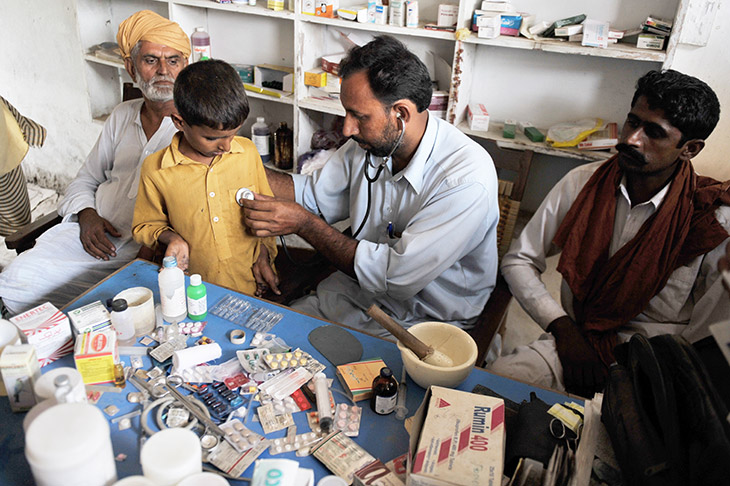Improvement of Medical Facilities in Remote Areas of Pakistan Across All Provinces

Introduction
Remote and rural communities in Pakistan face persistent barriers to quality healthcare: long travel distances, shortages of trained staff, limited diagnostics, weak referral systems, and fragile supply chains. Strengthening medical facilities in these areas is essential to reduce preventable illness, improve maternal and child health, and build resilience against outbreaks.
Current Models and Recent Initiatives
- Community-linked primary care: Basic Health Units (BHUs) and Rural Health Centres (RHCs) remain the first point of contact; successful pilots have used nurse-led clinics with teleconsultation links to city hospitals to widen access.
- Mobile and outreach services: Mobile clinics and vaccine outreach teams bring essential services to hard-to-reach populations during campaign drives and seasonal outreach.
- Provincial programs and new clinic rollouts: Provincial investments and targeted clinic programs have expanded primary care footprints, with notable province-level pilots for integrated primary services and community health worker support.
Essential Infrastructure and Equipment Needed in Remote Facilities
- Diagnostics and point-of-care testing: Rapid diagnostic tools (glucose, malaria, pregnancy, HBV/HCV rapid tests), portable ultrasound, and point-of-care molecular platforms for priority infections.
- Basic emergency and maternal care: Functional delivery rooms, neonatal resuscitation kits, reliable oxygen supplies, and essential medicines for obstetric emergencies.
- Cold-chain and vaccine logistics: Solar-powered refrigerators, temperature monitors, and last-mile cold boxes to secure immunization programs.
- Communication and digital connectivity: Reliable mobile broadband or satellite links, telemedicine hubs, and electronic immunization and patient registries to link peripheral sites with tertiary centres.
- Transport and referral systems: Ambulances or dedicated patient transport vouchers tied to clear referral pathways and stabilization protocols.
Human Resources and Service Delivery Reforms
- Task-shifting and skills mix: Scale trained midwives, community health nurses, and community health workers with clear scopes of practice and supervision to extend essential services.
- Continuous training and remote mentoring: E-learning, tele-mentoring, and periodic in-person upskilling to maintain competency in emergency obstetrics, neonatal care, and common acute illnesses.
- Incentives and retention packages: Rural hardship allowances, housing, career pathways, and rotation systems to attract and retain clinicians and allied staff in remote postings.
- Integrated primary-care packages: Bundled services (maternal-child health, immunization, nutrition, TB screening, NCD risk checks) delivered in a single visit to maximize value and coverage.
Governance, Financing, and Supply Chain Strengthening
- Increased, predictable financing: Ring-fenced budgets for rural primary care, transparent tracking, and multi-year planning to avoid stop-start programs.
- Public–private partnerships: Contract local NGOs, social enterprises, and private clinics to manage remote facilities where government capacity is limited, with strong performance-based contracting and reporting.
- Decentralized procurement and cold-chain resilience: Province- or district-level procurement flexibility combined with regional warehouses and solar cold-chain investments to reduce stockouts.
- Data-driven microplanning: Use GIS mapping, population registers, and digital dashboards to identify underserved catchment areas and prioritize resource allocation.
Technology and Innovation That Work in Remote Contexts
- Telemedicine networks: Hub-and-spoke models connecting BHUs/RHCs to tertiary specialists for consultations, diagnosis, and training.
- Portable diagnostics and solar power: Deploy portable ultrasound, oxygen concentrators with solar backups, and point-of-care molecular tests for TB and other infections.
- Digital registries and mHealth: Electronic immunization registries, SMS appointment reminders, and mobile reporting for surveillance and supply tracking.
- Community diagnostic vans: Multi-purpose mobile units that periodically bring labs, imaging, and specialist outreach to remote clusters.
Province-Specific Priorities
- Punjab: Scale nurse-led rural clinics and strengthen referral linkages to district hospitals; expand digital registries and cold-chain upgrades.
- Sindh: Improve flood-resilient infrastructure, strengthen peri-urban slum outreach, and support community midwifery in riverine and desert pockets.
- Khyber Pakhtunkhwa: Enhance mobile clinic reach into mountainous valleys and border areas; integrate mental-health and trauma-informed services.
- Balochistan: Prioritize transport and referral (air/road access), solar-powered cold-chain, and long-term incentives to retain staff.
- Gilgit-Baltistan and Azad Kashmir: Invest in telemedicine, mountain-capable ambulances, and seasonal outreach synchronized with weather windows.
What the Government Should Do Now
- Prioritize primary care financing with multi-year commitments and ring-fenced rural health allocations.
- Roll out a national telemedicine and e-health platform linking every BHU/RHC to at least one tertiary hub.
- Implement targeted HR policies: rural compensation, bonded rural service for graduates with mentorship, and fast-track upskilling for nurses and midwives.
- Invest in renewable-powered cold chains and oxygen systems in every remote facility to ensure continuity during outages.
- Scale proven mobile clinic models and formalize PPP contracts to extend management capacity and innovation.
- Expand community engagement and female health-worker recruitment to overcome cultural barriers to care.
- Strengthen surveillance and digital registries for immunization, TB, polio, and maternal outcomes to track coverage gaps and guide microplanning.
Financing Options and Partnerships
- Leverage provincial health cards and social-protection schemes to subsidize transport and care for rural patients.
- Mobilize donor funding and WHO/UNICEF technical support for cold-chain, diagnostics, and capacity building in targeted districts.
- Use blended financing: government seed funding, private investment for telemedicine platforms, and CSR contributions for clinic upgrades.
Measuring Success and Accountability
- Key indicators: Facility uptime, skilled-birth attendance rates, immunization coverage, TB case-detection in remote districts, referral completion rates, and stockout frequency.
- Public dashboards and independent audits to ensure transparency and continuous improvement.
- Community scorecards and participation in facility governance to tie services to local needs and build trust.
Conclusion
Improving medical facilities in Pakistan's remote areas requires a balanced mix of investment in infrastructure, human resources, technology, and governance. Practical steps—scaling telemedicine, solarizing critical equipment, strengthening supply chains, incentivizing rural staff, and deepening public–private collaboration—can produce rapid, measurable gains. With predictable financing, clear provincial plans, and targeted partnerships, Pakistan can close the rural-urban health gap and ensure that geography no longer determines the quality of care a citizen receives.
